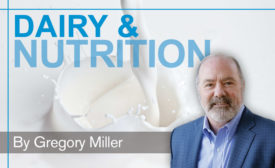Home » Keywords: » baby boomers
Items Tagged with 'baby boomers'
ARTICLES
Columnist Brad Legreid urges ‘don’t get left behind’
Read More
Dairy foods are essential for healthy aging in baby boomers
Eating the high-quality protein found in dairy foods can benefit older adults in overall health and help reduce the loss of muscle.
June 2, 2016
Tattoo who?
Tattoos and botox bind the generations
Millennials and the baby boomers are strongly bound together by the demographic trends they've fueled, starting with smaller households as Millennials postpone marriage and/or childbearing and Boomers divorce at an ever-growing rate.
April 12, 2013
Blueberries are a boon to dairy-based desserts
For product innovation, flexibility, flavor trends and luscious taste, blueberries are a boon to dairy-based desserts.
September 5, 2012
Baby boomers want better beverages
As Baby Boomers seek better health through better beverages, makers of juices, teas, coffees and other nondairy beverages create a new generation of drinks that offer flavor, variety and the promise of a new way of life.
May 14, 2012
Stay ahead of the curve. Unlock a dose of cutting-edge insights.
Receive our premium content directly to your inbox.
SIGN-UP TODAYCopyright ©2025. All Rights Reserved BNP Media.
Design, CMS, Hosting & Web Development :: ePublishing







